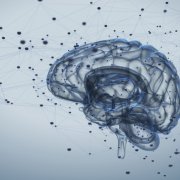In a new study, intracranial electrodes helped reveal the cells in our brains and the neurological mechanisms responsible for memory creation.
By Conor Feehly
The successful formation of memories is an essential function in humans. Our memories provide us with data on past events and experiences which mandate how we behave in the here and now. Memories are also central to the formation of a concept of self, as the autobiographical nature of our memories emanate from our individual perspective of the world.
The subjective experience of recalling memories has the character of being discrete. In other words, our memories have a beginning and an end, and relate to a particular time and place, which is perhaps distinct to the seemingly continuous nature of our waking conscious experiences.
The Birth of a Memory
In a new paper in Nature Neuroscience, which investigated the neural dynamics of memory formation, scientists discovered two types of neuronal cells that fire at perceived boundaries in our experience, which are believed by researchers to represent the ending and beginning of new memories.
“We knew that there are neurons that can distinguish sharp sensory transitions — a sudden sound, a flash of a visual stimulus — but the mechanisms responsible for demarcating complex cognitive events were completely unknown,” says Gabriel Kreiman, a co-author of the study and professor in the department of ophthalmology at Harvard Medical School.
Kreiman and his colleagues gathered their data via intracranial recordings, where electrodes are placed inside the skull that pick up the electrical activity of neurons. Due to the highly invasive nature of this type of neural recording, it is generally rare for neuroscientists to use this method of gathering data on the brain.
However, these types of intracranial electrodes are often placed on the brains of epilepsy patients in order to locate the sites of their seizures. With their consent, epilepsy patients will carry out certain tasks while neuroscientists closely monitor their brain activity, and this was the case in this study.
Participants in the study were asked to watch film clips with what investigators called “cognitive boundaries,” and for research purposes, defined these boundaries as either “hard” or “soft.” However, the researchers acknowledge that in daily life these distinctions might be more nuanced and trickier to define.
"An example of a soft boundary would be a scene with two people walking down a hallway and talking, and in the next scene, a third person joins them, but it is still part of the same overall narrative," said lead author of the study Ueli Rutishauser in a press release.
The researchers were surprised to find specific types of cells firing when participants would view these hard or soft boundaries in the film clips. Boundary cells responded to both soft and hard boundaries, and event cells, which are a specific type of neuron in the cortex, only responded to hard boundaries. The researchers suggest that when the firing of boundary and event cells peak, the brain enters the state of creating a new memory.
Rutishauser describes the response of boundary and event cells as something similar to creating a new folder in your computer where memories can be saved; when these cells fire again, the folder is closed and you create another one. If the brain needs to focus on a past memory, it uses the peaks of neural activity at these boundaries to locate the correct folder...
Read the full story on Discover Magazine's website using the link below.


![Embedded thumbnail for Neurons detect cognitive boundaries to structure episodic memories in humans [video]](https://cbmm.mit.edu/sites/default/files/styles/youtube_thumbnail_220w/public/youtube/RLWVVVszkOQ.jpg?itok=Hraq5AXQ)